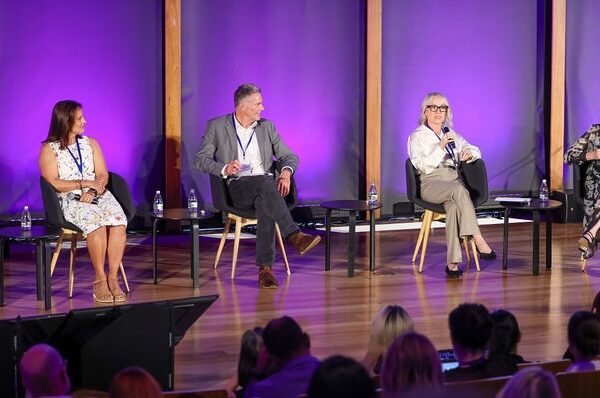Never waste a good crisis
I benefited from an academic and leadership career spanning 3 continents over 40 years. I always viewed the US as a different stage, but one with much to learn from. As I write this letter on a flight to New York from San Francisco, I feel so fortunate to have been in such a privileged position, while in a country undergoing such drama. I only wish more of the actors I met here were equally supported by HigherEd opportunity.
This was always going to be a dramatic time to visit the US and engage with its universities, and those that partner with them. The reality has been eye-opening. At a moment of national reckoning over funding, equity, freedom of speech, and institutional purpose, American higher education is caught between its past prestige and an uncertain future.
The Harvard President’s response, before last week’s most recent assault on its international students, in The Atlantic: “The Promise of American Higher Education”, acknowledges this inflection point. She writes:
“It is not time to abandon the promise of higher education. It is time to reclaim it.”
This newsletter, from my visit over the last 4 weeks to UC campuses, Brigham Young, and Western Governors University, offers a glimpse into how some institutions are attempting to do just that, and what Australia and others can learn. Act 1 has been an opening in 3 scenes.
Act 1 Scene 1: Berkeley in Battle Mode
At a UC Berkeley Academic Senate meeting on April 24, the gravity of the moment was clear. President Michael Drake concluded his five-year term with a speech that was less celebratory and more strategic retreat. It was just as commencement ceremonies began.

From US$1 million/month in legal costs, to contingency plans for covering $200M research shortfalls, the university is operating like a war council. Discussions revealed an ecosystem under siege—from federal interference to diversity program defunding.
The leadership, while committed to defending students and faculty, is retreating from visibility to preserve function. Yet signs of resilience remain – leaders are using the moment to rethink waste, simplify systems, and question what “risk” means if you stop doing things.

Visits were also made to UC Santa Barbara. This echoed the Cal experience in another part of the UC system. And then the action moved to two greatly contrasting institutions in Salt Lake City, Utah.
Act 1 Scene 2: BYU and the Prestige Game
Brigham Young University, while religiously and culturally distinct, mirrors many structural conventions of elite universities—football teams, endowments, prestige rankings.
But, along with many universities, also illustrates the absurdity of legacy signals. In a world where students can’t afford food, BYU, like many others, continues to invest in the iconography of institutional tradition—football stadiums and rankings—as if they still confer relevance.

Yet these signals—like commercial rankings—might just be becoming increasingly meaningless to the students of tomorrow.
“There might be more risk in clinging on to old measures than discarding them.”
Act 1 Scene 3: Western Governors University – Opting Out, Scaling Up
Western Governors University (WGU) is arguably the most radical contrast. No rankings. No stadium. No research function. No traditional academics. Yet, it has a quarter of a million students and some of the most advanced student support systems in the country.

Its success lies in:
- Competency-based education
- Digital-first learning
- Employer-aligned outcomes
- Purposeful exclusion from prestige signals
It doesn’t rely on public subsidies for equity or research because its model is, by design, affordable and scalable. It shows what a radically student-centric model might look like—and why it’s immune to many of the current federal government attacks.

A commercial intermission
The array of commercial university rankings in the US is augmented by system classification of providers dominated by the Carnegie classifications. The R1, R2, and R3 are different tiers of comprehensive teaching and research universities. These letters are where much of the prestige, competitive activity, and current government attention is focussed. Are they the Letters from America that we should continue to pay attention to and follow?
Carnegie is now going further in developing new classifications based on access to and outcomes from study. Unsurprisingly it is places like WGU that are shaping the methodology and performing well under it.
Equity scholarships and aid programs in themselves do little to help a dominant Ivy League or public research players show they are open. Their focus on world-class research and community leadership might be a distraction from a relentless focus on the student experience. This may detract from the college experience developing skills outcomes for learners valued by employers. They maybe don’t need them as being in networks with others of privilege has been enough. Until now.
I am really looking forward to learning more about the variety of ways of supporting student success on the East Coast of the US at NYU and CUNY later this week. I also look forward to seeing other ways of University’s contributions being measured and compared, at the HEPI conference in June and in visiting London South Bank University. Together they developed a UK social mobility index which turns bizarre rankings of privilege and prestige on their heads.
It is a very innovative way of the sector taking control of what gets measured and valued. It is a great response to a crisis, rather than remaining in the hands of the commercial lottery of rankings, or the proxy measures of games of football.
It might be time for more global tertiary education systems to use a good crisis to change for good. Reading and writing the wrong letters can lead to failing to make the most of a good crisis. After all:
“What Gets Measured Gets Funded, But What Gets Measured Can Change”
The crisis facing US higher education is not just financial—it’s conceptual. Institutions that have relied on legacy signals of quality—rankings, football, endowments, peer reputation—are being forced to justify their purpose.
Meanwhile, institutions like WGU and SNHU are quietly redefining relevance. As Australia, and other parts of the world, grapple with their own debates over equity, funding reform, and system purpose, we should ask:
- Are we measuring the right things?
- Are we investing in prestige or in people?
- And are we using moments of disruption to pivot meaningfully?
This is the time to make measurable and meaningful change, rather than a drama, out of a crisis.
What others are reading
Other attempts to measure social mobility impact by universities include some alternative attempts at rankings in the US have been refered to me by Teri Cannon. WURI, is an alternative ranking that considers innovation and not so much traditional inputs. And good work in this area has been led at the Georgetown Center on Education and the Workforce. This is a different kind of ranking from a great think tank that issues reports and papers almost every month.
John Burdick of NYU has referred me to a reading offering hope for these times, arguing the optimist in him says we can build a “paradise out of this hell“. While Chris Moran VC of UNE draws my attention to the work out of Curtin University in finding new ways to measure university performance. What gets measured clearly can change. We just have to want to.
Spotlight on others
The last few podcast episodes from our most recent HEDx event had a feature of including multiple US voices and insights from the stage and throughout its performance.
Paul J. LeBlanc gave a great opening and Dan Cockerell CEO of Torrens University Australia was able to share a career of visitor experiences from Disneyland in now leading student experience.
George Williams of Western Sydney University fully understands the need to meet students where they are through social media and his US counterpart was Timothy M. Renick of the national institute of student success established at Georgia State University .
Sue Kokonis of Online Education Services (OES) and Will Stubley of Year13 are two Australian corporate leaders seeking new growth opportunities in the US in a sector where the principles of distinctiveness in mission using tech is long established by Lev Gonick and Arizona State University.
The final session and most recent podcast was led by Sam Jacob and a panel of Australian leaders reflecting on how AI changes everything and the need for us to get creative in embracing it. You can listen to all the above on the podcast here and watch their sessions on our YouTube channel here.









